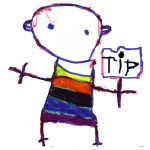Teaching science lessons and a learning environment full of energy and enthusiasm naturally go together. Read below to find out what science skills children need to learn and what they need to know about life, physical, and earth and space science.
Then create a learning environment with opportunities for them to investigate, ask questions and experiment. Include materials so students can record their observations.
Skills lists vary depending on where you live, but in general, students need to practice the skills of observation, collecting, and communicating. These skills are the framework for teaching the topics of life, physical, and earth and space sciences.
These skills are the framework for teaching the topics of life, physical, and earth and space sciences.
Observation – students are able to:
- gather information using their five senses
- know what body part is used to gather specific sensory information
- describe their observations, I see… I hear… I can smell…
- identify, with help, the shape, texture, hardness. etc. of an object
- relate what they have learned to other areas of learning
Collecting – students are able to:
- collect information by counting objects, taking part in surveys, measuring, and doing simple experiments
- use the words never, sometimes, and always to describe the chance of things happening
- ask questions about the information they have gathered (data)
- compare data using measurement terms – bigger, smaller
- draw a picture of their data using one-to-one correspondence
Communicating – students are able to:
- talk about their observations using new vocabulary
- work with others by sharing, listening, and encouraging
- with help, show their information in a realistic and organized way
- with help, show their information in different ways with pictures, graphs, with some math and writing
- share ideas about why the thing they observed happened
- ask “I wonder how” or “I wonder why” questions

Science and math go hand in hand. Have the children collect, display, and look over data as part of your science lessons. They will have opportunities to count, compare, measure, record and make sense of their observations. It is a great way to practice math skills and build a math vocabulary.
Children are always eager to try new science projects and activities, especially if they get to explore stuff or watch living things. Take advantage of this enthusiasm to get kids to take part in printing and math activities.
A word about worksheets…
A common mistake when teaching science to young children is to load them up with worksheets that are knowledge based, rather than allowing them to find out how the natural world works, with observable physical evidence. Four, five, and six-year-old scientists are natural explorers and are interested in their world. They learn by taking part in meaningful experiences, through play, by experimenting, asking questions, inventing and through social interaction.
If your classroom contains child-friendly displays of interesting objects from the natural and physical world and opportunities for children to experiment, ask questions and record their observations, your students are well on their way to being confident, creative thinkers and problem solvers.
Children are so driven to find out about their world that they will seek out something to observe, no matter what the circumstances. When my 5-year-old son came home from school (which was very heavily worksheet based) and asked me whether I had ever watched dust fall, I knew it was time to change schools!
